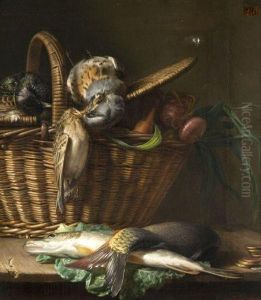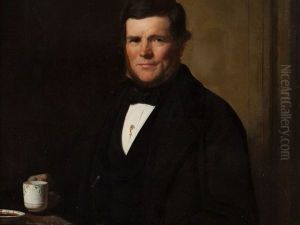Camille Dolard Paintings
Camille Dolard, born in 1810 in Lyon, France, was an artist whose contributions to the world of art are often celebrated for their emotional depth and technical proficiency. Dolard's life and work spanned a period of significant change in the French art world, including the rise of Romanticism and the beginnings of Impressionism. Despite not being as widely recognized as some of his contemporaries, Dolard's work has been appreciated for its innovative approach to light and shadow, as well as its expressive use of color.
Dolard initially trained under the guidance of local artists in Lyon, a city known for its rich artistic heritage. Lyon's vibrant cultural scene provided a fertile ground for Dolard's early artistic explorations. He moved to Paris in his twenties to further his studies and immerse himself in the heart of the French art world. It was in Paris that Dolard began to develop his signature style, which was influenced by the Romantic movement. His paintings often depicted scenes of nature and human figures, imbued with a sense of drama and emotion that was characteristic of the Romantic ethos.
Throughout his career, Dolard experimented with various mediums, including oil painting, watercolor, and lithography. His versatility as an artist allowed him to express his creative vision in multiple forms, from detailed landscapes to poignant portraits. Although Dolard's work received some recognition during his lifetime, he remained relatively outside the mainstream art scene, focusing instead on cultivating his unique aesthetic.
Dolard's contributions to art were not limited to his own creations. He was also known for his involvement in the artistic community, mentoring younger artists and participating in the vibrant cultural exchanges that characterized Parisian art circles in the 19th century. Despite the challenges of living as an artist in this competitive environment, Dolard remained dedicated to his craft until his death in 1884.
Today, Camille Dolard's artwork is held in various collections around the world, offering a glimpse into the emotional intensity and technical skill of this underappreciated master. His legacy lives on as a testament to the depth and diversity of 19th-century French art, reminding us of the enduring power of creativity and passion.


